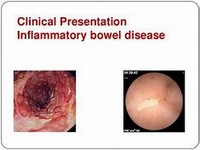
OBESITY
FOODS THAT HEAL
FOODS TO LIMIT
WHO’S AFFECTED
7% of Americans and 24% of Canadians
Being overweight is the most common nutrition-related health problem in North America, affecting more than 60% of all adults
Of these, more than 24% of Canadians and 35% of Americans are considered obese and are consequently at increased risk for an early death
Obesity can cause physical problems such as shortness of breath, skin chafing, and difficulty moving around, making it hard to enjoy a normal life
Obese people have an increased risk of coronary heart disease, high blood pressure, stroke, diabetes, and certain types of cancer
Other health consequences include damage to the weight-bearing joints
This leads to osteoarthritis and disability, which perpetuate the vicious circle by restricting movement, leading to further weight gain
Nutrition Connection
Eating too much is the key factor in obesity and weight gainHere are some food-related guidelines to help drop the pounds: Limit calories
A diet providing about 1,500 calories a day for a woman and 2,000 for a man is a reasonable approach
Combined with a moderate exercise program, it should allow a loss of 1 to 2 lb (0
45 to 0
90 kg) a week
Watch empty calories
No foods need to be totally forbidden, but empty calories—those that don’t provide any nutrition—such as those in alcohol, sugary desserts, and high- fat, high-salt snack foods should be limited
Eat breakfast every day
Skipping breakfast is a lot like skipping rope: Neither gets you anywhere
Although lots of people think they’ll cut calories by cutting breakfast, the opposite is true
One national US health and nutrition survey found that men who eat breakfast weigh about 6 lb (2
7 kg) less than men who skip it; women weigh 9 lb (4 kg) less
Eat high-fiber foods
Eat a bowl of brown rice topped with chickpeas and sautéed vegetables for lunch, and it’s likely you won’t want another bite until supper
High-fiber foods like these have few calories, little fat, and lots of bulk, which keeps you full
They’re also digested slowly
A great way to get a good dose of fiber is to start your day with high-fiber cereal
85,000 new cancer cases per year are related to obesity
Head for the salad bar
Greens and raw vegetables like carrots, zucchini, and broccoli are remarkably low in calories but high in water and slow-digesting fiber, so they tend to fill you up
But avoid creamy dressings, croutons, cheese, nuts, and other toppings that can add extra calories
Researchers have also found that people who eat a vegetarian diet weigh an average of 3 to 20% less than meat eaters
Nosh on protein
Make it a point to eat some protein from fish, chicken, or beans with every meal (and every snack, too)
Studies have shown that people on high-protein diets that are also rich in low- glycemic carbohydrates (such as fruits and vegetables, beans, and whole-wheat pasta) are less hungry and lose more weight than people on low-protein, high-carbohydrate diets
Try low-fat dairy
People deficient in calcium tend to be hungrier
Enjoy low-fat dairy foods like milk, cheese, and yogurt to stay full and speed ftat loss
QUICK TIP:
Assess your weighttakes into account your height and weight to determine if your weight is healthy
Find a BMI calculator online
If your BMI is 25 to 29
9, you’re overweight; 30 or more, you’re obese
Another measure that’s good to know is your waist circumference
An increased risk of developing heart disease, diabetes, and other health problems comes with a waist circumference greater than 35 in (88 cm) for women and greater than 40 in (102 cm) for men
Eat healthy nuts
Large studies have found that people who eat moderate portions of nuts regularly have a lower body mass index than those who don’t
The healthy fat in nuts helps people feel full
Avoid fad diets
Very low calorie diets or fad diets tend to lead to the yo-yo phenomenon, in which people lose weight, then quickly regain all they’ve lost and more
The additional weight is often even harder to shed
Beyond the Diet
While maintaining a healthy diet is the primary way to ward off obesity, several other tips can help, including: Buddy upThe studies are unequivocal: People who attend support groups as part of a comprehensive weight loss program lose more weight than those who go it alone
Even less formal forms of support can help
Among those who embarked on the program with friends in a University of Pennsylvania study, 95% completed the program compared to only 76% of those who dieted solo
Move more
If you’re trying to lose weight, more activity is better
An hour or even 90 minutes of moderate exercise, or 30 minutes of vigorous activity such as jogging, strenuous aerobics, or fast- paced cycling, is ideal
Of course, anything you do is better than nothing, and consistency counts
Keep a journal
The biggest challenge is not losing weight but keeping it off
Most dieters regain all the weight they’ve lost within 5 years
Weighing yourself regularly and keeping track of your progress has been shown to help you maintain your results
Writing down what you’ve eaten and when you’ve exercised can not only keep you accountable, but it can help you uncover habits that may sabotage your weight loss
Dodge obesogens
Chemical compounds that can disrupt metabolism, obesogens may lead to obesity
Bisphenol-A (BPA) in plastic bottles, high-fructose corn syrup in processed foods, and some pesticides and medications, including selective serotonin reuptake inhibitors (SSRIs), are all potential obesogens
Importance of well balance diet




